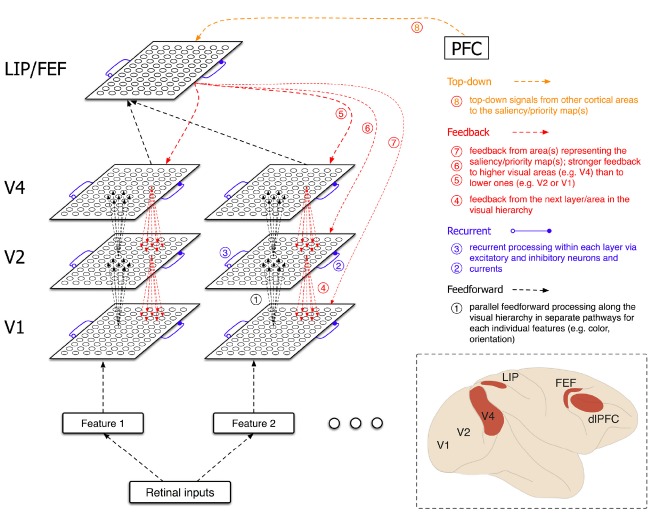FIGURE 1.
Schematic of the network architecture and different types of neural processes (feedforward, recurrent, feedback, and top-down) involved in bottom-up attention (saliency computations). Saliency computations start with the process of external inputs that fall on the retina. Feedforward processing of the inputs, in separate pathways selective to different visual features (color, orientation, etc.), in successive layers of neural populations (from V1 to V4) enhances the signals that could guide attentional selection. However, this enhancement requires interactions between neighboring neurons via recurrent excitatory and inhibitory inputs. Because the saliency signals become stronger in successive layers, feedback from the next layer/area in the visual hierarchy could further enhance the signals. Ultimately, outputs of different pathways are combined to instantiate the saliency/priority map(s) (possibly in area LIP and/or FEF) that represents the visual salience of the entire visual field and can determine the next attended location. Feedback from the saliency/priority map(s) to lower visual areas could further enhance the saliency signals. Moreover, top-down signals from other cortical areas such as dlPFC could exert top-down effects and task demands on saliency computations. The inset shows a cartoon of macaque’s brain with relevant areas highlighted.

